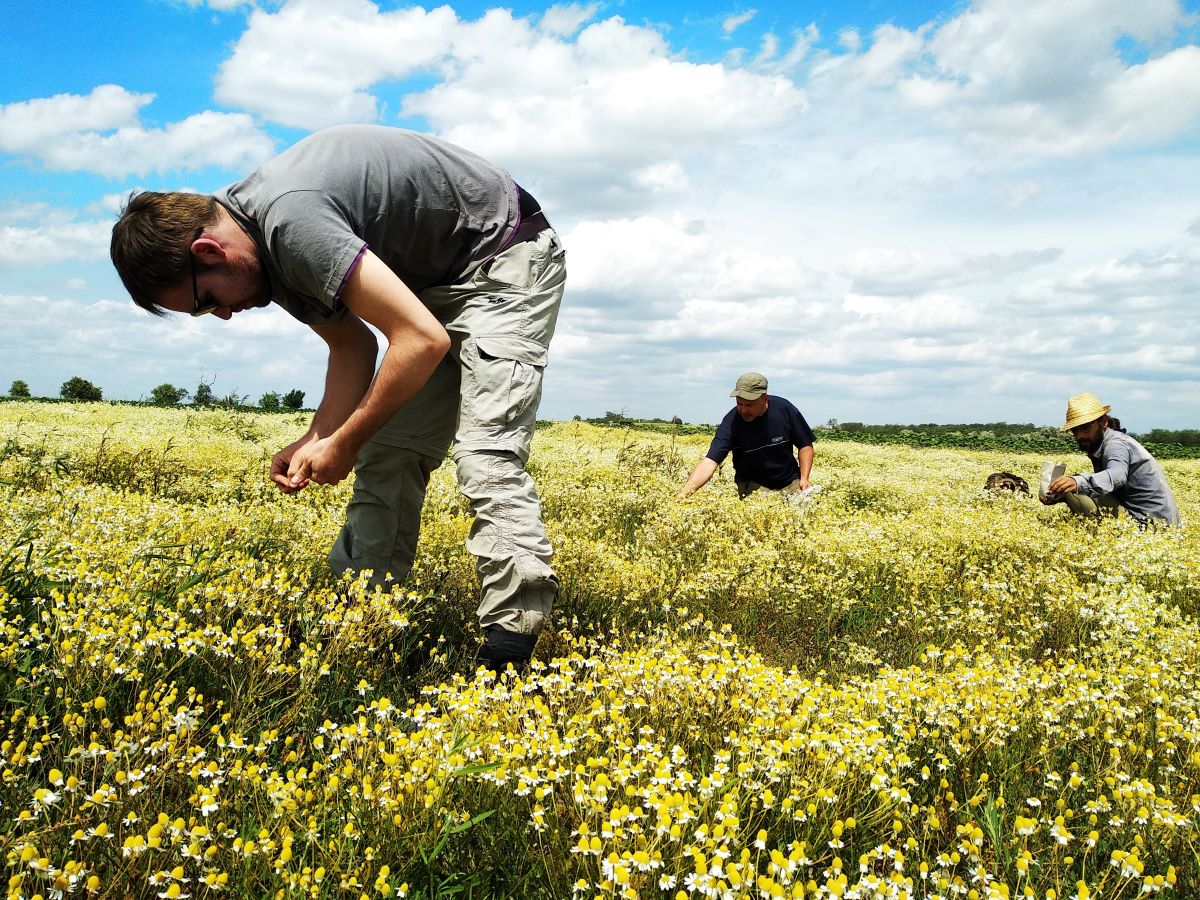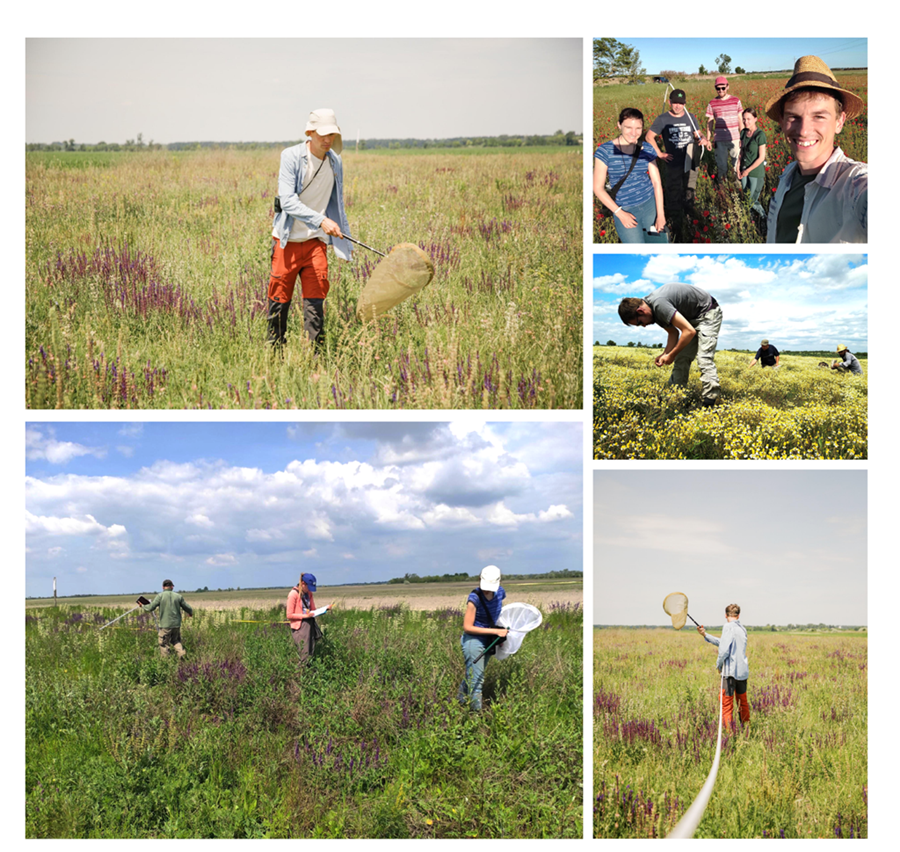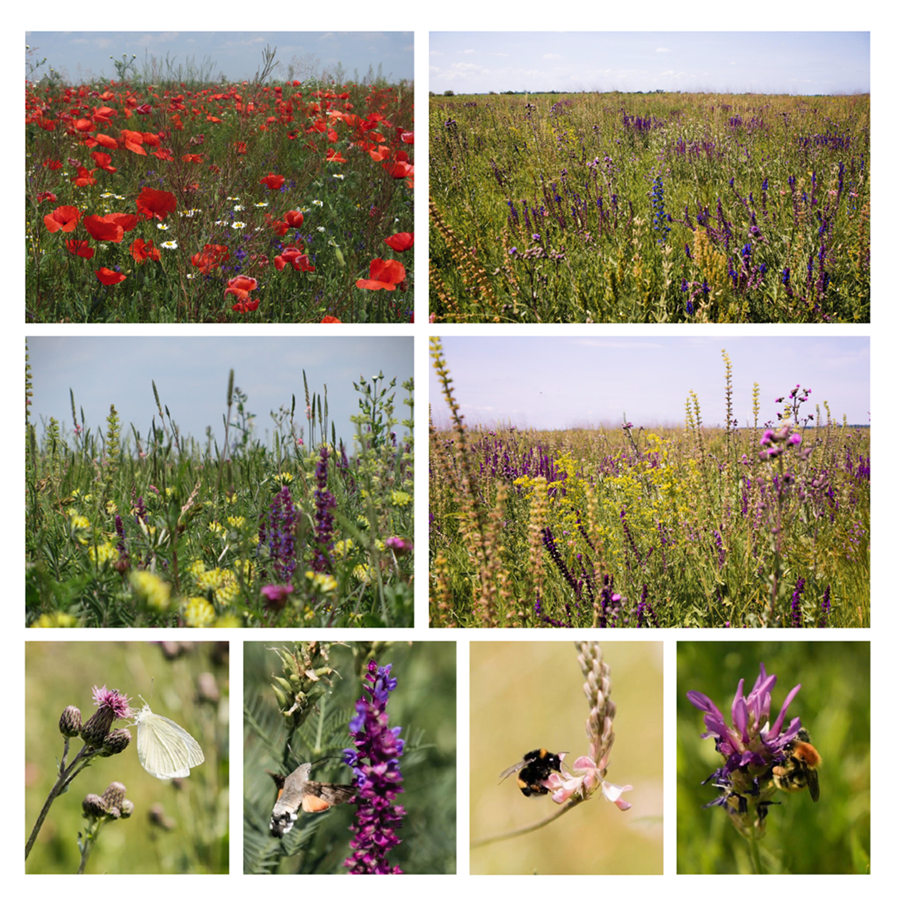
Pollinators are declining rapidly, largely due to land conversion and intensification of agriculture. To mitigate their crisis, low-disturbance habitats, such as sown wildflower plantings (commonly known forms are wildflower strips at the edges of arable fields), could promote pollinators by restoration of their resources (food, sheltering and nesting habitats). However, comprehensive knowledge is lacking on how landscape context, spatial configuration and age of wildflower plantings, seasonality and flower composition affect pollinator communities, especially from East-Central Europe.
To understand these effects, researchers from the HUN-REN Centre for Ecological Research established diverse native wildflower plantings within heterogeneous and homogeneous agricultural landscapes, by two spatial configurations: one large field or three smaller strips. Floral resources and wild pollinator insects (wild bees, hoverflies, butterflies) were sampled, in early and mid-summer, for two years after establishment (2020-21).
Flower resources of the sown plant species increased continuously, and were complemented at high rate by flowering plant species from the soil seed bank, especially in the first year. Both flower abundance and diversity increased the abundance of pollinators, highlighting the important role of using diverse seed mixtures. Wild bee abundance and species richness increased year by year and season by season, while butterfly abundance also demonstrated a yearly increase after establishment. Hoverfly abundance and species richness, however, showed an opposite trend, possibly due to the inter-annual variation. Wild bee and butterfly abundance was higher in the heterogeneous than in the homogeneous landscapes. Researchers did not observe any significant local effects of spatial configuration itself on pollinator populations.

Our results emphasize that to support pollinators effectively, future wildflower plantings should be maintained for multiple years, in order to maximize floral diversity and ensure continuously available flower resources throughout the entire season.
Further results from the upcoming years and similar long-term and landscape-scale experimental studies are needed to understand all the benefits and ecological processes of diverse native wildflower plantings especially in understudied European regions.

Photos: Viktor Szigeti (top left and middle left) and Borbála Bihaly (bottom row, top right and middle right)


